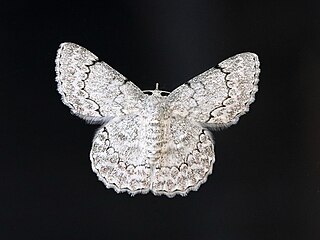
The Heracleidae or Heraclids were the numerous descendants of Heracles holding (Hercules), especially applied in a narrower sense to the descendants of Hyllus, the eldest of his four sons by Deianira. Other Heracleidae included Macaria, Lamos, Manto, Bianor, Tlepolemus, and Telephus. These Heraclids were a group of Dorian kings who conquered the Peloponnesian kingdoms of Mycenae, Sparta and Argos; according to the literary tradition in Greek mythology, they claimed a right to rule through their ancestor. Since Karl Otfried Müller's Die Dorier, I. ch. 3, their rise to dominance has been associated with a "Dorian invasion". Though details of genealogy differ from one ancient author to another, the cultural significance of the mythic theme, that the descendants of Heracles, exiled after his death, returned some generations later to reclaim land that their ancestors had held in Mycenaean Greece, was to assert the primal legitimacy of a traditional ruling clan that traced its origin, thus its legitimacy, to Heracles.

Saurita is a genus of moths in the subfamily Arctiinae. The genus was erected by Gottlieb August Wilhelm Herrich-Schäffer in 1855.

Pingasa chlora, the white looper moth or flower-eating caterpillar, is a species of moth of the family Geometridae first described by Caspar Stoll in 1782. It is found in Sundaland, the Philippines, Sulawesi and from the Moluccas to Queensland, Australia.
Saurita astyoche is a moth in the subfamily Arctiinae. It was described by Carl Geyer in 1832. It is found in Suriname and Rio Grande do Sul, Brazil.

Saurita cassandra is a moth in the subfamily Arctiinae. It was described by Carl Linnaeus in his 1758 10th edition of Systema Naturae. It is found in Trinidad, Suriname, Venezuela and Argentina.
Saurita hilda is a moth in the subfamily Arctiinae. It was described by Herbert Druce in 1906. It is found in Peru.
Saurita incerta is a moth in the subfamily Arctiinae. It was described by Francis Walker in 1856. It is found in Panama and Colombia.
Saurita intricata is a moth in the subfamily Arctiinae. It was described by Francis Walker in 1854. It is found in the Brazilian states of Espírito Santo and Rio de Janeiro.
Saurita melanota is a moth in the subfamily Arctiinae. It was described by George Hampson in 1909. It is found in Guyana.

Saurita mora is a moth in the subfamily Arctiinae. It was described by Herbert Druce in 1897. It is found in Panama.
Saurita myrrha is a moth in the subfamily Arctiinae. It was described by Herbert Druce in 1884. It is found in Guatemala.
Saurita pilipennis is a moth in the subfamily Arctiinae. It was described by Zerny in 1931. It is found in Colombia.
Saurita salta is a moth in the subfamily Arctiinae. It was described by Schaus in 1894. It is primarily found in Venezuela.
Saurita sanguinea is a moth in the subfamily Arctiinae. It was described by Herbert Druce in 1884. It is found in Guatemala.
Saurita sericea is a moth in the subfamily Arctiinae. It was described by Gottlieb August Wilhelm Herrich-Schäffer in 1854. It is found in Panama and Rio de Janeiro, Brazil.
Saurita tenuis is a moth in the subfamily Arctiinae. It was described by Arthur Gardiner Butler in 1876. It is found in the Amazon region.
Saurita tipulina is a moth in the subfamily Arctiinae. It was described by Jacob Hübner in 1812. It is found in Guatemala, Panama and Brazil.
Saurita tristissima is a moth in the subfamily Arctiinae. It was described by Perty in 1834. It is found in the Amazon region.
Saurita vindonissa is a moth in the subfamily Arctiinae. It was described by Herbert Druce in 1883. It is found in Ecuador.

The Euchromiina are a subtribe of tiger moths in the family Erebidae. It was described by Arthur Gardiner Butler in 1876. Many species in the subtribe are mimics of wasps. Euchromiina have always been considered closely related to the subtribe Ctenuchina due to their similarity to moths and wasps. These two subtribes make up around 3,000 valid species, the majority of which occur in the Neotropics.




